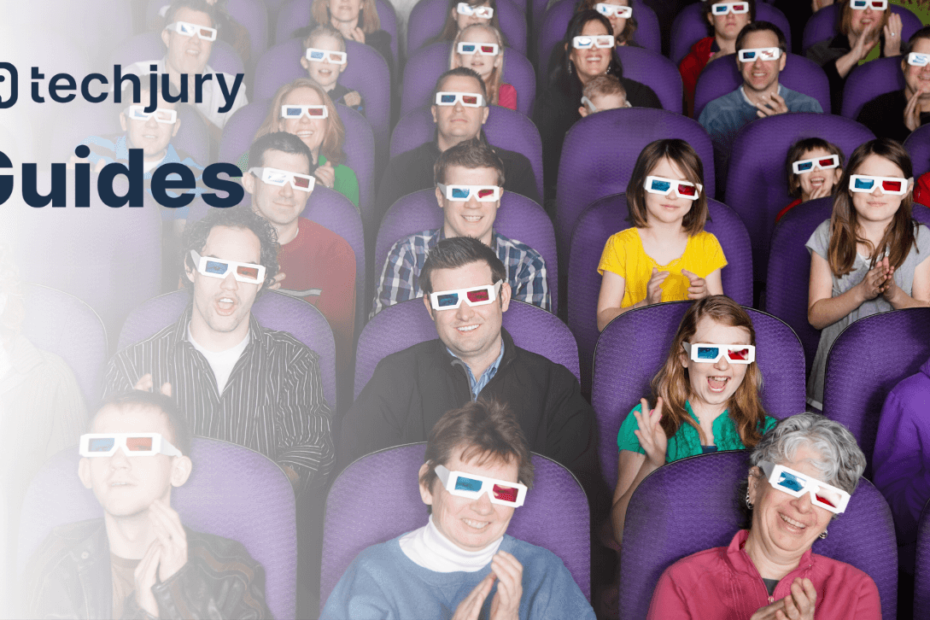The Technological Metamorphosis of Visual Storytelling
Imagine stepping into a cinema where images don‘t just play across a screen, but seemingly leap into your personal space, creating an immersive experience that transcends traditional storytelling. This is the world of 3D movies—a technological marvel that has transformed how we consume visual narratives.
The journey of three-dimensional cinematography represents far more than a simple visual gimmick; it‘s a complex intersection of advanced computational technologies, optical engineering, and human perception psychology. What began as a rudimentary experiment in visual representation has evolved into a sophisticated technological ecosystem that challenges our understanding of visual communication.
The Mathematical Foundations of Depth Perception
At its core, 3D movie technology exploits a fundamental neurological mechanism: stereoscopic vision. Our brains naturally process visual information from two slightly different perspectives—one from each eye—to create depth perception. 3D cinematography replicates this biological process through precise technological interventions.
The mathematical principles underlying 3D rendering involve complex trigonometric calculations. Cinematographers must capture and synchronize two distinct visual perspectives, typically separated by approximately [64-70 millimeters]—equivalent to the average human interpupillary distance. These perspectives are then algorithmically processed to create the illusion of three-dimensional space.
Historical Evolution: From Experimental Concept to Technological Marvel
The roots of 3D cinematography stretch back to the early 20th century, but the technology‘s true renaissance occurred in the late 2000s. While primitive stereoscopic techniques existed since 1922, it wasn‘t until James Cameron‘s "Avatar" in 2009 that the technology truly captured global imagination.
Cameron‘s groundbreaking film represented a watershed moment. By investing [approximately $237 million] in technological research and development, he transformed 3D from a novelty into a serious cinematic medium. The film‘s unprecedented [$2.8 billion] global box office performance demonstrated the massive commercial potential of immersive visual storytelling.
Technological Milestones
Each technological leap in 3D cinematography has been driven by computational advancements. Early anaglyph techniques using red-blue glasses gave way to polarized and active shutter technologies, dramatically improving visual fidelity and viewer comfort.
Modern 3D rendering involves incredibly sophisticated computational processes. A single frame of a high-quality 3D film can require [up to 2.5 petaFLOPS] of computational power—equivalent to the processing capabilities of thousands of high-end personal computers working simultaneously.
The Science of Immersion: Understanding Viewer Psychology
What makes 3D movies psychologically compelling? Researchers have discovered that depth perception triggers more complex neurological responses than traditional two-dimensional viewing. The human brain processes stereoscopic imagery through multiple neural pathways, creating a more engaging sensory experience.
Neuroimaging studies reveal that 3D content activates additional brain regions compared to standard cinematography. The parietal and occipital lobes show increased activity, suggesting a more immersive cognitive engagement. This neurological response explains why viewers often report feeling more emotionally connected to 3D narratives.
Technical Challenges in Rendering
Creating convincing 3D experiences isn‘t merely about technological capability but understanding perceptual limitations. Human eyes can only process depth variations within specific ranges. Cinematographers must carefully calibrate visual elements to prevent viewer fatigue or disorientation.
The technical challenges include:
- Maintaining precise inter-ocular distances
- Managing convergence points
- Minimizing visual artifacts
- Balancing computational complexity with rendering speed
Market Dynamics and Economic Impact
The global 3D cinema market represents a fascinating economic ecosystem. From [2015 to 2022], the market experienced significant fluctuations, reflecting technological advancements and changing consumer preferences.
Current market projections suggest a [compound annual growth rate (CAGR)] of approximately 12.4% between 2023 and 2030. This growth is driven by emerging markets in Asia-Pacific, where technological adoption rates remain high and audience enthusiasm for immersive experiences continues to expand.
Regional Technology Adoption
Different global regions demonstrate unique 3D movie consumption patterns:
- North America: Technologically sophisticated, but experiencing market saturation
- China: Rapid technological adoption with massive audience engagement
- Europe: More selective, emphasizing artistic and technical quality
- India: Emerging market with significant growth potential
Future Trajectories: Beyond Traditional Cinematography
The next frontier of 3D technology extends beyond traditional cinema. Virtual reality, augmented reality, and mixed reality technologies are rapidly converging, promising even more immersive visual experiences.
Machine learning algorithms are now being employed to enhance 3D rendering techniques. These AI-driven approaches can:
- Predict optimal rendering parameters
- Automatically correct visual artifacts
- Generate more naturalistic depth representations
Practical Implications for Technology Enthusiasts
For those fascinated by the intersection of technology and storytelling, 3D cinematography offers a remarkable lens into human-technology interaction. Understanding these technological nuances provides insights into broader computational and perceptual innovations.
Investment and Technological Exploration
Technology enthusiasts and potential investors should consider:
- Emerging rendering technologies
- Computational infrastructure developments
- Cross-disciplinary research opportunities
- Potential applications beyond entertainment
Conclusion: A Continuous Technological Journey
3D movies represent more than a cinematic technique—they embody humanity‘s perpetual quest to expand sensory experiences through technological innovation. As computational capabilities continue advancing, the boundaries between physical and digital realities will become increasingly fluid.
The story of 3D cinematography is far from complete. Each technological breakthrough brings us closer to more immersive, emotionally resonant storytelling methods that challenge our understanding of visual communication.
Stay curious, stay engaged, and embrace the continuous evolution of technological wonder.
